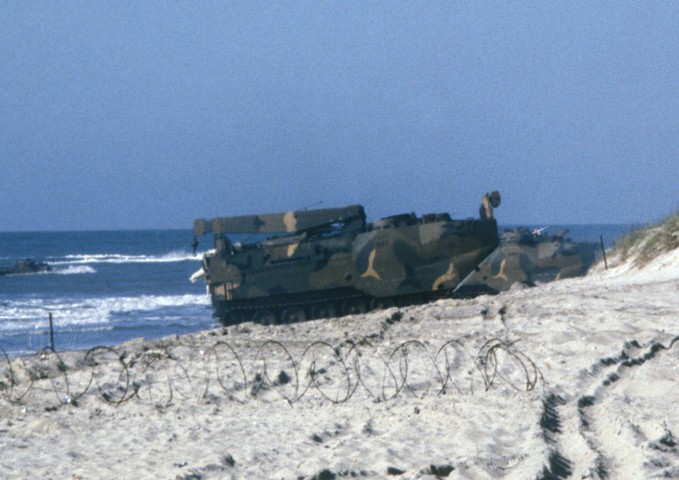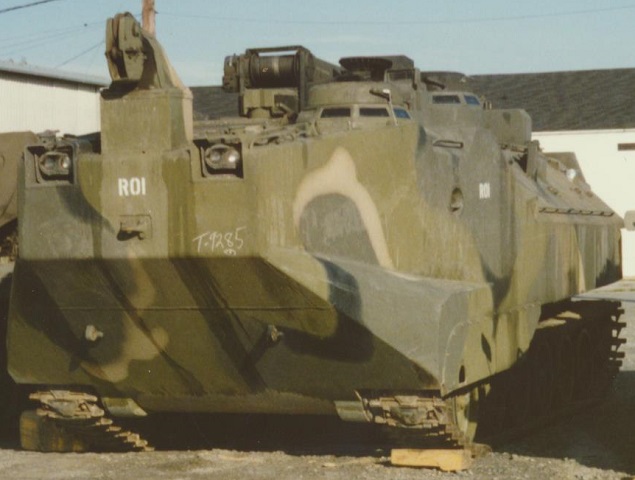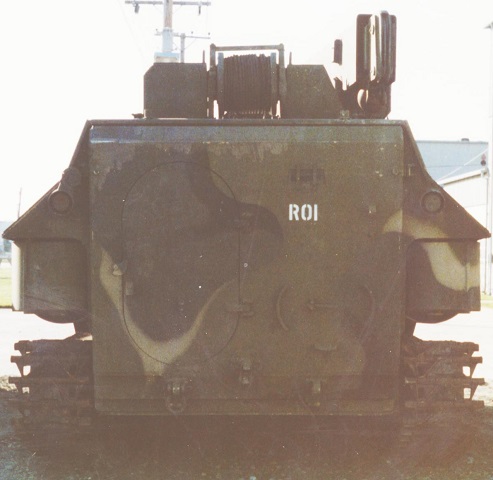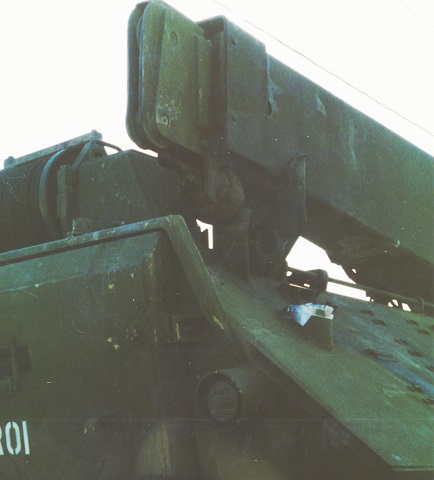
Landing Vehicle, Tracked, Recovery, Mark 7.

The most obvious difference between this LVTR7 and the LVTP7 upon which it is based is the crane boom installed on the roof of the vehicle. The unarmed vision cupola that replaced the weapon station is visible just in front of the crane boom. There is a winch fairlead on the bow of the vehicle, and the winch assembly is obscured by the trees to the rear of the vehicle. The tall post near the center of the side of the vehicle is a cargo hatch post, and just to the rear of this is the fuel filler cover. This vehicle was taking part in a multinational peacekeeping mission with the 22nd Marine Amphibious Unit. (Picture taken 30 Nov 1983; available from the Defense Visual Information Center.)

The winch fairlead on the vehicle's nose and the winch assembly on top of the rear of the vehicle can be better seen in this color photograph. These vehicles were taking part in Exercise Solid Shield '85. (Picture taken 1 Jun 1985 by Sgt. T. K. Burch; available from the Defense Visual Information Center.)

A better view of the layout of the winch fairlead and crane boom mounting is provided here. The vision blocks around the driver's cupola can be seen at the hull's left front corner, and the commander's cupola is above and behind this. When in operation, the crane operator would sit on the seat attached to the crane boom that is visible between these two cupolas. Farther to the rear of the vehicle on the side's upper slope can be see the cargo hatch support post, and directly behind this is the fuel fill cover. (Photo by Richard S. Eshleman.)

The 30,000lb (14,000kg) winch was mounted on the roof at the rear of the vehicle, and the crane boom was stowed beside it when not in use. The large retractable rear ramp was provided with an oval personnel door to the left and flanges on which to stow a tow cable on the right. Directly above the "R01" stencil is the stern vision block. At the bottom of the vehicle's rear, a central towing pintle is flanked by a towing eye on each side. The taillight-stop light assemblies are visible outboard of the ramp door, and the vehicle's horn is attached above and to the right of the left taillight-stop light assembly. Below the taillights, the water jet deflectors are mounted, and they are swiveled closed for protection of the internal mechanisms. (Photo by Richard S. Eshleman.)

Further details of the crane boom and its stowage are showcased here. The plastic-covered protuberance on the vehicle side below the boom was an antenna mount. (Photo by Richard S. Eshleman.)